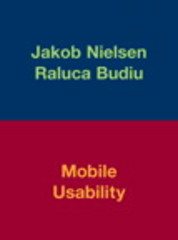Answered step by step
Verified Expert Solution
Question
1 Approved Answer
CE881 Assignment 1 2020-21 The aim of the assignments of CE881 Mobile And Social Application Programming is to produce an Android app. The work is
CE881 Assignment 1 2020-21 The aim of the assignments of CE881 Mobile And Social Application Programming is to produce an Android app. The work is split into two parts to help ensure that you make steady progress. Assignment 1 is to demonstrate a working knowledge of non-trivial Android app conception, design and business models by describing a prototype of your app and the design choices you made. Assignment 2 is to implement the complete app, write a report on it and present it. Before deciding on an app to develop you are strongly advised to discuss your choice with the module supervisor Assignment 1 This assignment counts towards 20% of the overall mark for CE881. The assignment is to be submitted individually. This is not a group assignment. Submit on FASER by week 5 (check on FASER the exact deadline). Be sure to put your registration number as a comment at the top of all files/pictures. The assignment must be submitted in a single zipped archive containing: 5 pages (limit) report in pdf format. The aim of this part of the assignment is to describe the idea, design and rationale for your app including an outline of how you intend to implement it including the classes, activities, intents and fragments. A folder with the wireframe representations of all the main screens on your app and the interaction points. These screens must be on separate pieces of paper. Provide also an app map to ensure you have all the screens you need and what links to where. See Lecture/Lab 2 material. This can be presented as slides (using as figures photos of hand-drawn screens is fine). Any other form of presentation should be agreed with the module supervisor and confirmed by mail. User journeys covering the main usage of your app (Lecture 2). The user journey is a series of screens, information and buttons the user must experience or interact with in order to achieve their goal and obtain the benefit from the system. This also can be presented as slides (using as figures photos of hand-drawn screens is fine). Any other form of presentation should be agreed with the module supervisor and confirmed by mail. Some working code with a deployable APK is a plus. Presentation to the module supervisor during the following labs. The report should be split into the following sections: Introduction: explains the problem that your app will address, the purpose of the app, outlines its main features and the business model (monetization approach, Lecture 5). Provide a one line problem statement and app goal similar to those you find on Play Store. For an example of matching problem and app goal see the links in Lecture 1. Background: description of app idea generation and validation process (see Lecture 3), similar apps including market research data indicating the size of the market for this type of app. Features: describe what your app will do as a set of bullet points with a brief description of each one. Features may be split into essential and desirable. Design & Structure: describes the design of the app. Referring to the wireframe representation describe the activities, menus, intents, fragments you envisage your app being composed of. Describe any external services (e.g. database) it will use. Describe the app lifecycle and how the saving and loading of data will be managed. Content: where the content will come from, what format it will be in, expected size, update cycles, etc. Plan: estimate of when you expect to implement each part, and how long it will take. Length: 5 pages + figures. Marking guidelines Report (50%) o Well defined problem, app description and business model (7.5%) o Background (10%) o Features (5%) o Design & Structure (15%) o Content (2.5%) o Plan (5%) o Quality of writing (5%) Clear and complete wireframe representation (25%) Clear user story covering crucial usages (15%) Minimum app running (10%) WARNING AND ADVICE ABOUT POSSIBLE ACADEMIC OFFENCES Your solutions should be your own unaided work. You can make use of any of the programs from the CE881 lecture notes and the lab solutions. You may use any features from the Java SE API and Android SDK including those not covered in CE881. You must NOT use any third-party classes (e.g. classes that are not provided as part of the Java SE download). If you use any other sources, you must clearly indicate this as comments in the program, and the extent of the reference must be clearly indicated. For more information, please see the University pages on plagiarism and the Academic Offences Procedures. DO NOT COPY PROGRAM CODE FOR THIS ASSIGNMENT FROM ANOTHER STUDENT OR FROM THE INTERNET OR FROM ANY OTHER SOURCES. DO NOT LET OTHER STUDENTS COPY YOUR WORK
Attachments:
Step by Step Solution
There are 3 Steps involved in it
Step: 1

Get Instant Access to Expert-Tailored Solutions
See step-by-step solutions with expert insights and AI powered tools for academic success
Step: 2

Step: 3

Ace Your Homework with AI
Get the answers you need in no time with our AI-driven, step-by-step assistance
Get Started


